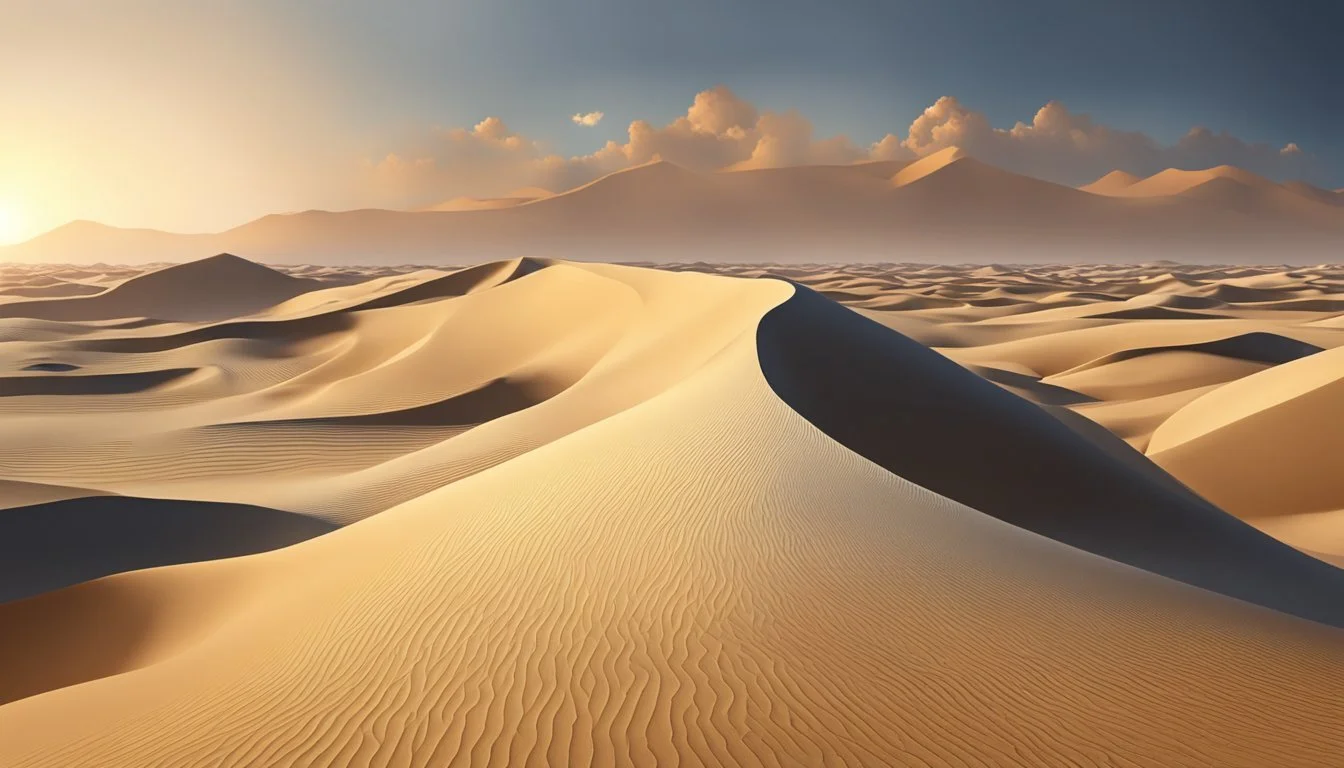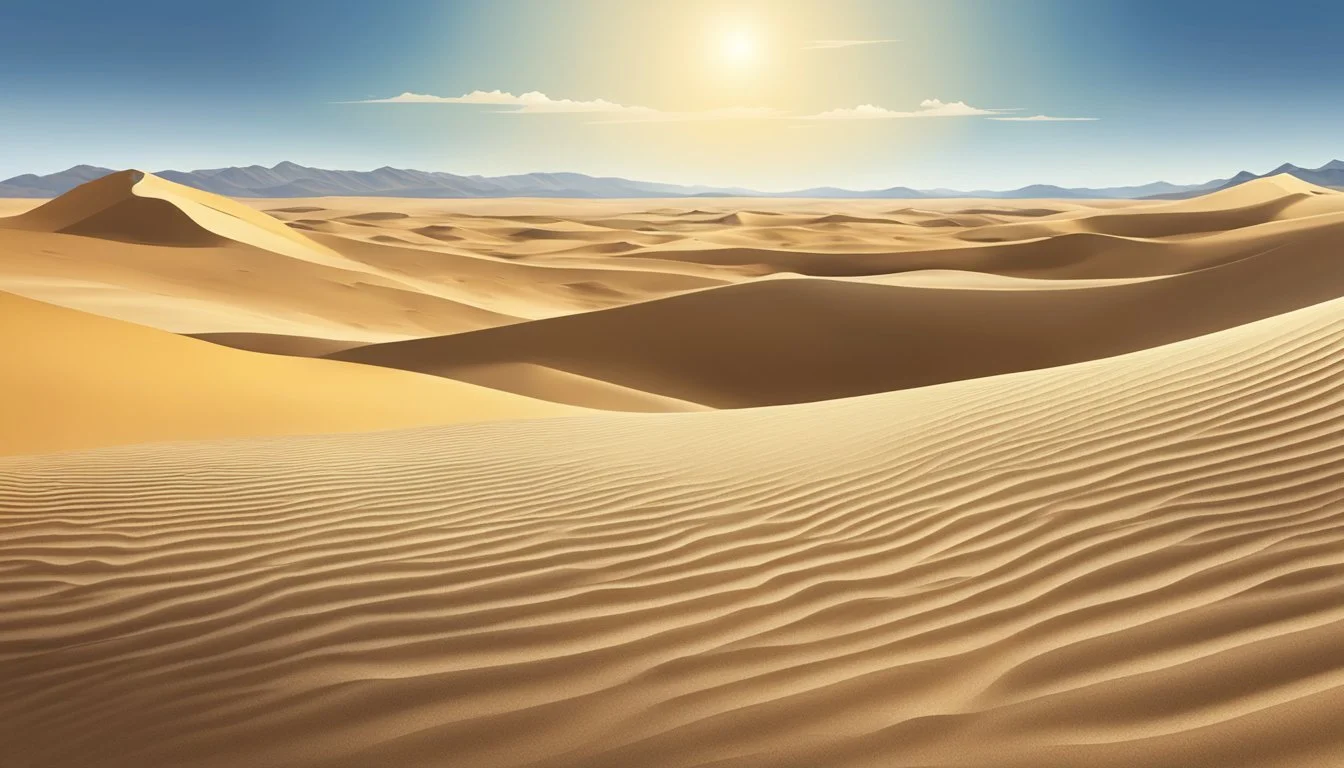Jodorowsky's Dune: The Mind-Bending Sci-Fi Epic That Almost Changed Cinema Forever
The 2013 documentary "Jodorowsky's Dune" chronicles one of the most ambitious unrealized film projects in cinema history. Directed by Frank Pavich, the film explores cult filmmaker Alejandro Jodorowsky's failed attempt to adapt Frank Herbert's science fiction novel "Dune" in the 1970s.
Jodorowsky assembled an impressive team of collaborators for his vision, including artists H.R. Giger and Jean "Moebius" Giraud, as well as potential cast members like Salvador Dalí, Orson Welles, and Mick Jagger. The documentary features interviews with Jodorowsky himself, providing insight into his creative process and the grand scope of his intended adaptation.
Though Jodorowsky's "Dune" never made it to the screen, its influence can be seen in later science fiction films. The documentary showcases surviving concept art and storyboards, offering a glimpse into what might have been a groundbreaking cinematic experience. It stands as a testament to the power of artistic vision and the challenges of bringing ambitious projects to fruition in the film industry.
The Vision of Alejandro Jodorowsky
Alejandro Jodorowsky's vision for Dune was an ambitious, avant-garde project that sought to transform Frank Herbert's novel into a psychedelic cinematic experience. The Chilean filmmaker approached the adaptation with characteristic boldness and imagination.
Inception and Ambition
Jodorowsky's Dune project began in the early 1970s. Fresh off the success of his surrealist films El Topo and The Holy Mountain, Jodorowsky set his sights on adapting Herbert's science fiction epic. He envisioned a 10-14 hour film that would be a transformative, consciousness-expanding experience for audiences.
The director saw Dune as more than just a movie. He viewed it as a prophetic work that could change the world. Jodorowsky's ambition was to create a film that would have the impact of spiritual enlightenment on viewers.
Collaboration with Icons
Jodorowsky assembled an impressive team of collaborators for his Dune project. He recruited artists H.R. Giger, Chris Foss, and Jean "Moebius" Giraud to design the film's visual aesthetic.
For the cast, Jodorowsky pursued an eclectic mix of icons:
Salvador Dalí as the Emperor
Orson Welles as Baron Harkonnen
Mick Jagger as Feyd-Rautha
David Carradine as Duke Leto
The director also planned to feature his own son, Brontis Jodorowsky, as Paul Atreides. This star-studded ensemble reflected Jodorowsky's grand vision for the project.
Philosophical and Spiritual Underpinnings
Jodorowsky's interpretation of Dune was deeply rooted in his personal spiritual beliefs and philosophical outlook. He saw the story as a vehicle for exploring themes of consciousness expansion, spiritual awakening, and the evolution of humanity.
The director planned to infuse the film with elements of mysticism, tarot symbolism, and psychedelic imagery. He envisioned the Fremen as "spiritual warriors" on a cosmic quest. Jodorowsky's Dune would have deviated significantly from Herbert's novel, transforming it into a cinematic expression of the director's unique worldview.
Pre-Production and Design
The pre-production and design phase of Jodorowsky's unrealized Dune adaptation was ambitious and visionary. It brought together an eclectic group of artists to create a unique visual style for the film.
Storyboarding and Artistic Direction
Jean Giraud, known professionally as Moebius, played a key role in developing the visual aesthetic for Jodorowsky's Dune. The renowned French comic artist created over 3,000 detailed storyboards that mapped out the entire film shot-by-shot. These storyboards were instrumental in conveying Jodorowsky's grand vision.
Chris Foss, a British science fiction artist, designed many of the film's spaceships and vehicles. His colorful and imaginative concepts helped shape the look of the Dune universe.
H.R. Giger, famous for his biomechanical art style, was tasked with designing the dark and industrial world of Harkonnen. His surreal and nightmarish concepts added a unique visual flair to the project.
Casting Choices
Jodorowsky made several unconventional casting choices for his Dune adaptation. He approached Orson Welles to play Baron Harkonnen, reportedly agreeing to hire Welles' favorite chef to cater the shoot.
Salvador Dali was offered the role of Emperor Shaddam IV. The eccentric artist demanded $100,000 per hour of screen time. Jodorowsky planned to use a robotic double for most scenes to minimize Dali's actual filming time.
Mick Jagger was set to play Feyd-Rautha, while David Carradine was cast as Duke Leto. These choices reflected Jodorowsky's desire to blend the worlds of art, music, and cinema in his ambitious project.
Costume and Set Design
The costume and set design for Jodorowsky's Dune promised to be as bold and innovative as the rest of the production. Moebius contributed designs for many of the film's costumes, infusing them with his distinctive style.
Sets were planned to be massive in scale, with Jodorowsky envisioning entire planets brought to life on screen. The designs incorporated elements from various artists' styles, creating a unique visual tapestry.
Giger's influence was particularly strong in the design of the Harkonnen world, with plans for biomechanical architecture and unsettling organic-looking structures. These designs would have created a stark contrast with the other environments in the film.
Music and Sound
The auditory elements of Dune play a crucial role in immersing viewers in its alien worlds. Innovative scoring techniques and progressive rock influences shape the film's unique sonic landscape.
Scoring the Unfilmable
Hans Zimmer's score for Dune blends electronic and orchestral elements to capture the vastness of Arrakis. He created custom instruments to produce otherworldly sounds, including the "Mother Box" synthesizer. Zimmer's use of female vocals evokes the mysterious power of the Bene Gesserit.
The soundtrack incorporates throat singing and bagpipes to represent the Fremen culture. These unconventional choices help bring Frank Herbert's complex universe to life sonically.
Contributions from Progressive Rock
Progressive rock bands have long drawn inspiration from Dune's themes. Pink Floyd was once attached to score Alejandro Jodorowsky's unrealized 1970s adaptation. Their spacey, atmospheric style influenced later Dune projects.
The French band Magma created an entire mythos and language inspired by Dune. Their intense, chanted vocals and complex rhythms echo the novel's epic scope.
These prog rock connections highlight Dune's enduring impact on experimental music. The film's sound design embraces this legacy, pushing boundaries to create an immersive audio experience.
Cinematic Impact
Dune's influence on cinema extends far beyond its own adaptations. The epic sci-fi saga has shaped visual aesthetics, storytelling techniques, and thematic approaches in numerous films and franchises.
Jodorowsky's Influence on Later Works
Alejandro Jodorowsky's ambitious but unrealized Dune project left an indelible mark on Hollywood. His concept art and storyboards inspired visual elements in films like Alien, Blade Runner, and Star Wars. The grand scale of Jodorowsky's vision pushed filmmakers to think bigger, influencing epic space operas and sci-fi worldbuilding for decades. His team of collaborators, including H.R. Giger and Dan O'Bannon, went on to shape iconic films in their own right.
The Legacy in Science Fiction
Frank Herbert's Dune has been a wellspring of ideas for science fiction filmmakers. Its complex political intrigue and ecological themes found echoes in later works. Star Wars borrowed concepts like desert planets and spice mines. The portrayal of advanced technology mixed with feudal social structures became a common trope. Dune's approach to psychic powers and genetic engineering influenced depictions of enhanced humans in sci-fi cinema. Its epic scope raised the bar for world-building in Hollywood blockbusters.
The Documentary Film
"Jodorowsky's Dune" explores the ambitious yet unrealized adaptation of Frank Herbert's science fiction novel. The film delves into Alejandro Jodorowsky's creative vision and the talented team he assembled for the project.
Capturing the Unmade Epic
Frank Pavich directed "Jodorowsky's Dune" in 2013, chronicling the Chilean-French filmmaker's attempt to bring "Dune" to the big screen in the 1970s. The documentary features interviews with Jodorowsky himself, showcasing his passion and unconventional ideas for the adaptation.
Producer Michel Seydoux played a crucial role in supporting Jodorowsky's vision. The film highlights the extensive pre-production work, including concept art by Jean Giraud (Moebius) and H.R. Giger.
Jodorowsky's plans for casting were equally ambitious, with figures like Salvador Dalí and Orson Welles attached to the project. The documentary unveils storyboards and designs that offer a glimpse into what could have been a groundbreaking science fiction film.
Critical Reception and Awards
"Jodorowsky's Dune" received widespread acclaim upon its release. Critics praised its ability to capture the excitement and creativity of Jodorowsky's unrealized project.
The documentary garnered several award nominations, including Best Documentary at the Fantastic Fest and the Audience Award at the San Sebastián International Film Festival.
Filmmaker Nicolas Winding Refn appears in the documentary, expressing admiration for Jodorowsky's vision. His participation underscores the influence Jodorowsky's ideas had on subsequent generations of directors.
The film's exploration of the creative process and the impact of unmade projects resonated with audiences and critics alike. It shed light on a pivotal moment in cinema history and the enduring legacy of Jodorowsky's ambitious undertaking.
Challenges and Controversies
The Dune documentary faced significant obstacles in production, from financial constraints to conceptual hurdles. These challenges shaped the project's trajectory and influenced its ultimate outcome.
Financial and Logistical Setbacks
Budget limitations plagued the Dune documentary from the outset. The ambitious scope of the project, which aimed to cover the entire franchise history, demanded substantial resources. Producers struggled to secure adequate funding, forcing compromises on production quality and interview access.
Logistical issues compounded the financial strain. Coordinating interviews with key figures from Dune's past proved challenging, as many were scattered across the globe or hesitant to participate. This led to gaps in the documentary's narrative and a reliance on secondary sources.
Travel restrictions and scheduling conflicts further impeded the production timeline. The team had to adapt, often resorting to remote interviews and archival footage to fill content gaps.
Conceptualizing the Unproducible
Translating Dune's complex universe to documentary format presented unique creative challenges. The filmmakers grappled with how to visually represent abstract concepts and intricate political systems central to the story.
Special effects played a crucial role in this endeavor. The team experimented with various techniques to bring Dune's alien landscapes and creatures to life, balancing authenticity with budget constraints. This process involved blending practical effects with modern CGI, reminiscent of the challenges faced by Dune adaptations in the 1970s.
Representing the book's philosophical themes proved equally daunting. The documentary struggled to convey Herbert's intricate ideas without oversimplifying or alienating viewers unfamiliar with the source material.
Adaptation and Interpretation
Frank Herbert's Dune has inspired numerous adaptations across various media. Each interpretation brings a unique vision to the rich sci-fi universe Herbert created, while grappling with the novel's complex themes and expansive narrative.
Comparing Dune Interpretations
David Lynch's 1984 film adaptation of Dune took a surrealist approach, incorporating bizarre imagery and unconventional storytelling. The movie received mixed reviews but gained a cult following over time.
Denis Villeneuve's 2021 version aimed for a more grounded and visually stunning portrayal of Arrakis. This adaptation garnered critical acclaim for its cinematography and faithful representation of Herbert's world.
Alejandro Jodorowsky's unrealized 1970s Dune project, documented in "Jodorowsky's Dune," promised an ambitious and psychedelic take on the novel. Though never completed, it influenced future sci-fi films.
Frank Herbert's Involvement and Views
Frank Herbert maintained a cautious stance toward adaptations of his work. He expressed concerns about the challenges of translating Dune's intricate plot and themes to the screen.
Herbert collaborated with David Lynch during the 1984 film's production, offering input on the script and worldbuilding. However, he had mixed feelings about the final product.
The author emphasized the importance of preserving the novel's ecological and political themes in any adaptation. He believed these elements were crucial to the story's core message.




